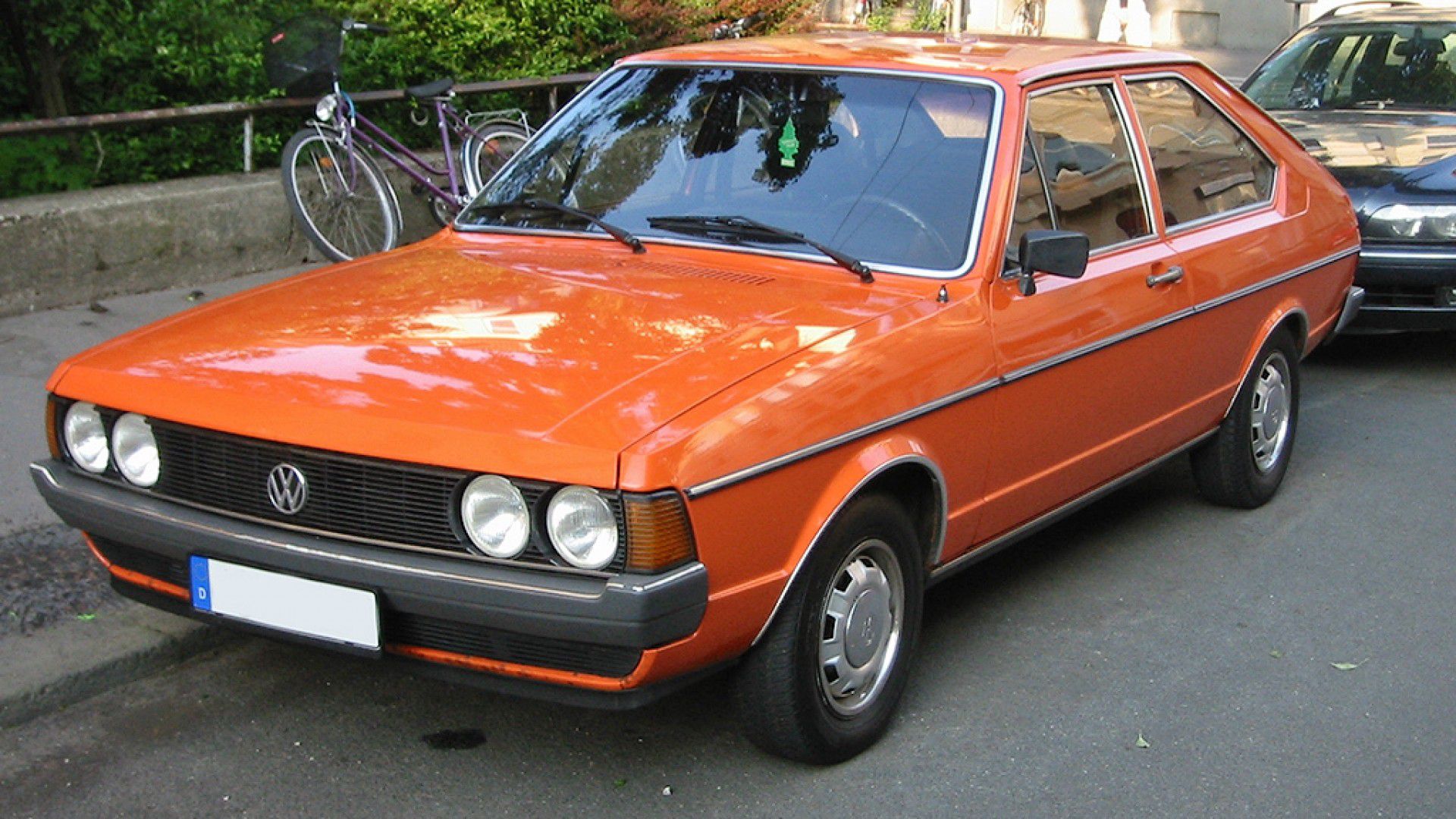Volkswagen Passat B2
The Volkswagen Passat B2 is the second generation of the mid-size car manufacturer Volkswagen Passat. He released in the fall of 1980, the Passat B1. In the spring of 1988 it replaced in Germany the Passat B3.
In October 1980, the Passat B2 was presented. Internally, the series also 32B (Variant: 33B) was named as the successor of the first series (from 1977 as a sedan type 32A, 33A and as a combined type as Hatchback Type 321 called). Both the concept and the external appearance remained preserved, but it was still an almost entirely new construction. Major changes include longer and wider body and the new torsion beam rear axle with Spring-damper units.
In February 1981, the Passat Estate as well as the three-door hatchback came on the market.
In September 1981 VW introduced the Passat luxuriously upgraded and provided with a notchback variant Santana aside. In the U.S., they went under the name Quantum.
In August 1982, Volkswagen presented a diesel engine with turbocharger. In October 1984, the all-wheel drive Passat Variant Syncro was added.
The most common variant is the five-door station wagon (Variant sales designation). In addition, there was the Passat than three five-door hatchback and as well as more luxurious saloon Santana.
Passat and Santana, among others differ on the front. The Passat has fog lights next to the headlights and turn signal lights in the bumper. The Santana has simple headlights. The turn signals, generally with white covers, are located next to the fender corners.
In January 1985, VW took before a facelift on the Passat. Feature of this revision are bulkier bumpers, a coarser ribbed front grille, fog lamps and touch-ups to the interior, the other rear lights hatchback and rear window glued instead of rubber attached. The three-door sedan accounted for. In addition, the Santana was the Passat (Saloon) renamed and received its front.
On March 31, 1988 saw the end of production, the all-wheel drive variant (Syncro) still came off the line by July 1988.
With 3,345,248 in Germany and more than 4.5 million vehicles produced, the Passat B2 is one of the most successful cars of all time. The models sold in Germany were built in the VW Emden and Brussels.
The VW Passat B2 was also a special version offered in addition to a conventional 4-speed transmission, through the fuel consumption should be reduced. This so-called “4 + E-gear transmission” had an additional energy-saving gear, which was translated longer than a normal fifth gear. The top speed could not be achieved in this passage, for it was during highway driving due to lower speeds less fuel needed.
Various special models were offered, which were based on a basic package with limited color choice and a variety of optional equipment offered at a cheaper price in comparison. Examples are Tramp, Trophy, trend, TA Passat, Topic, Carat, Arena.
The version with all-wheel drive (type 32B-299) was presented Syncro in the fall of 1984 under the name, based on the Audi Quattro system and the IAA 1983 study presented Passat Variant Tetra.
The underbody of the Passat syncro is designed differently than the front-wheel drive versions. The central tunnel has been enlarged to make room for the propeller shaft. At the rear, the spare wheel well, which had to make way for the gerückten to the rear tank and the elaborate rear axle with subframe, trailing arms and differential absorption disappeared.
The spare, here for reasons of space, only a narrow spare wheel, now standing on left side under a cover in the trunk. Were continuously all four wheels are driven at a distribution of 50% forward and 50% rear. The force was routed through a lockable center differential to the rear. The rear differential was also lockable. The Syncro models were only available in the variant version, initially only with GT equipment and five-cylinder engines 2,0 l/85 kW (115 PS) und 2,2 l/88 kW (120 PS) mit Katalysator, abs 1985 auch in der Basisversion C mit 1,8 l/66 kW (90 PS) Vergaser und mit und Katalysator Benzineinspritzung.
At the International Motor Show in Frankfurt in 1983 was the study Electronic presented. Features were all-wheel drive with ABS, 2.2-liter five-cylinder turbo engine with 147 kW (200hp) from the Audi quattro, sports seats with lumbar support and Gurtvorholer, leveling control, stepless dimming, cruise control, heated windscreen washer jets and power windows with automatic safety.
Even abroad, the Passat B2 was popular, the sales name of the variant in the United States is Volkswagen Quantum, Mexico Volkswagen Corsair, in Argentina Volkswagen Carat. In Brazil, the Passat as Santana and Quantum were (Variant) sold (here there were also the only two-door version of Santana), but also with slight body changes under the Ford brand as Ford Versailles (notchback) and Ford Royale (combined) sold. The Ford Royale was also a two-door Combined available. Thus the B2 six different basic body shapes were produced. In China, the Variant and notchback version to date (March 2008) will also be produced as Santana.
Over the years, massive changes in technology and the appearance were carried out on all after 1992 produced in South America versions, which resembled that of the B4 produced in Germany from 1994 to the end. In China, a version of the highly modified Brazilian Santana was produced with a longer wheelbase, with the range between B-and C-pillar has been extended. The version with a longer wheelbase called Santana 2000 (to February 2003), Santana 3000 (from March 2003) and Santana Vista (from late 2007). In China, produced both versions of the Santana parallel to today (March 2008).
The base engines from VW, the engines with more than 100 hp coming from Audi.
The 5-cylinder and diesel engines were not available in Brazil and China.
200
